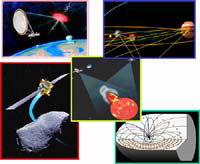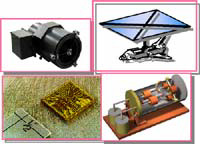Return to Current Site

|
To achieve its future science goals, NASA needs smarter, faster, more powerful spacecraft carrying "intelligent," more autonomous instruments. Moreover, these revolutionary advanced spacecraft and instruments will need to communicate with Earth-based receiving stations and with other space-based communication networks at much higher data rates. And, for some missions, both spacecraft and instruments must be smaller in size and operate more efficiently. Significantly advanced technologies will enable higher science return, while others will substantially reduce operational costs. While developing innovative emerging technologies is an exciting enterprise, it is much more difficult to design specialized equipment and components to withstand the harsh environment of space——zero pressure, extreme temperatures, and deadly high-energy particles——than to design "gadgets" for everyday applications here on Earth. Plus, using untried technology for the first time in complex space exploration missions is highly risky. The New Millennium Program (NMP) identifies and space-flight validates breakthrough technologies that will significantly reduce risks and costs and ultimately benefit future NASA science missions.
NMP's selected technologies encompass small (Space Technology 9) to medium class (Deep Space 1) system-level technologies, which are flight validated by NMP-funded teams. The Program also identifies subsystem technologies (such as those on Space Technology 6 and Space Technology 8). Both classes of technology experiments help enable NASA's Discovery Program and Explorer Program (medium-class, small, and university-class) space science missions. Some NMP projects (Deep Space 1, Earth Observing 1, Space Technology 5, and Space Technology 7) incorporate several spacecraft systems and instrument technologies on a single NMP flight validation mission. Other NMP projects (Deep Space 2, Earth Observing 3, and Space Technology 6) fly new instrument concepts for technological advances as secondary payloads (experiments) on spacecraft that have other primary objectives. Under either scenario, the technologies flown are proven under strict cost and schedule constraints. |








